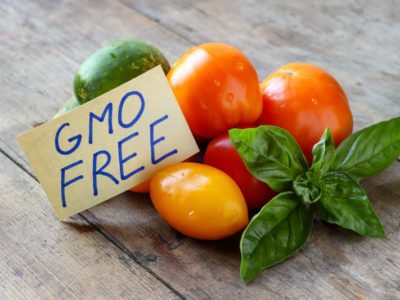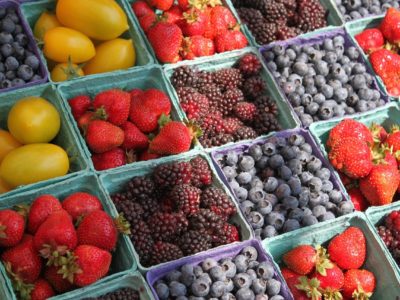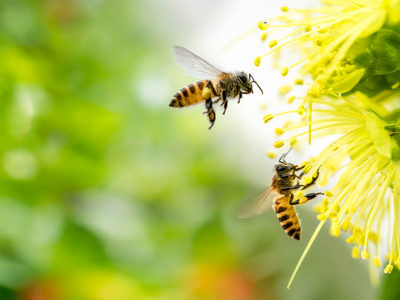Table of Contents[Hide][Show]
We all know that vegetables should constitute a large portion of our diet. A small side salad at dinner is just not going to cut it.
We have all heard the phrase eat the rainbow, but why? Each one of the colorful vegetables represents a myriad of vitamins, minerals, enzymes, and phytonutrients.
Overall increasing plant foods in anyone’s diet will be helpful with disease prevention and vital nutrients for good health. You really cannot get enough vegetables of the leafy green variety.
Beyond nutrition there are a myriad of benefits of a plant-based diet. Today we’ll dive into how this lifestyle can be good for you, for your local farmers, and for the planet. Learn what to look for when selecting your fruits and veggies, plus get a bonus recipe and at end of this post.
Macronutrients – How Many Veggies Do You Need?
Good health in the body is reliant on not only getting the three macronutrients but getting the right quality.
The carbohydrates that we really need are the plant-based variety. Vegetables have an indispensable role in good health. For example, fiber is the secret ingredient that is only found in carbohydrates. Fiber carries vital nutrients to the large intestine, helps to feel full with fewer calories, maintains proper bowel function, and reduces cholesterol.
And we do need protein to stay healthy, but sometimes our body has a problem digesting it without proper enzymes. It is possible to break down vegetable proteins and absorb more nutrients with a product we love, Masszymes.
Everyone’s nutritional needs are different, but a good place to start is with a 40 percent carbohydrates, 30 percent proteins, and 30 percent fat ratio.
If you think of the low calorie content of veggies you can start to imagine what a pile of 40 percent vegetables can look like on the plate. Calorie dense foods like protein and fat will be dwarfed by the 40 percent power of the veggies on the plate. It would be approximately half of a dinner plate of cooked and raw vegetables. If you are someone who needs some cooked, whole, properly prepared grains, about a half of a cup is plenty with your veggies for your carb fix.
How Do You Eat Plant-Based?
For some, a plant-centered diet means sustaining on vegetables, fruits, tubers, whole grains, and legumes alone with no sugar, no processed fats, and no animal products.
Eliminating processed foods is key. Whole foods are the foods your body was meant to digest and have vital roles in building an optimally functioning human organism. For many of us, just upping the amount of vegetables on the plate will bring a huge improvement to our health and the health of the planet.
American diets are packed with processed foods with labels that need deciphering. We have become a society hooked on the taste of salty and sweet and are losing our connection with the vital foods that bring us lasting health. Our tastebuds are accustomed to high flavor profiles that are manufactured to “bliss points” that in the end, are making us sick.
Related
Curbing Junk Food Habits: How to Stop Craving Late Night Sugar and Chips
Discover the 10 best ways to curb your junk food cravings and make healthy, nutritious foods the focus of your diet instead.
Experiment With Different Flavors
In Ayurveda there are 6 flavors; sweet, salty, bitter, pungent, sour, and astringent. Let’s embrace the other 4 as they are plant foods.
Foods and spices that have healing properties within them. Consume fermented foods for sour and pungent flavors, greens for bitter flavors, and certain fruits for astringent flavors. This is a fun way to think about incorporating a variety of flavors into your diet.
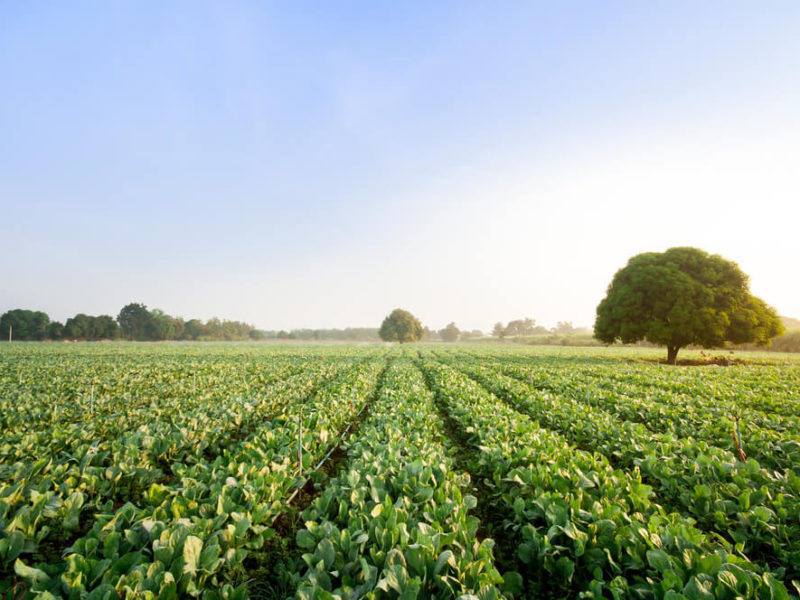
Growing Standards & How You Can Make an Impact
When possible you should also look for foods that are organic, pesticide and herbicide free, non-GMO, and locally grown ideally because they’ll be fresher.
Organic
Organic farmers have to meet strict codes and pay fees to have the organic seal on the label. These plants do not have GMO’s or pesticides sprayed on them during growing or harvest. The land has been free of banned pesticides for at least 3 years. You can feel good that organic products are the best quality that you can purchase at the farmer’s market or grocery store.
Pesticide/Spray-Free
Sometimes you will find this at local farmer’s markets where they are basically organic but have not payed the fees to be certified.
Dr. Mercola, an osteopathic physician and with an extensive online alternative medicine resource and Natural Health Center, states, “The Environmental Protection Agency (EPA) considers 60 percent of herbicides, 90 percent of fungicides, and 30 percent of insecticides to be carcinogenic, and most are damaging to your nervous system as well.”
These substances are linked to a whole host of health problems like Parkinson’s, endocrine disruption, infertility, and neurotoxicity.
Non-GMO
GMO stands for Genetically Modified Organism. A non-GMO seal assures that a food is not genetically modified. This is the step up from conventional. This is a highly controversial label but is important in the health community. Some people are highly sensitive to pesticides and GMO foods. They not only have altered genetics that are inside the plant but are paired with heavy chemical sprays to kill weeds in the field. We don’t know how many genetically engineered foods are out there now because they are not labeled but many people have dramatic health improvements when they consume only non-GMO foods.
Related
GMO Scandal: Why You Should Avoid Genetically Modified Food
In the United States, more than 70% of the food stocked on the shelves of supermarkets directly or indirectly contain genetically modified (GM) ingredients. There are eight GM food crops on the market. The five major varieties are soy, corn, canola, cotton, and sugar beets. These five all have bacterial genes inserted, which allow the …
Modern Agriculture
It is in our best interests to employ sustainable agriculture that is healthy for us and the planet. Buying local from the farmers market and eating seasonally is one step towards knowing where our food comes from and not spending a lot of fossil fuels to get it to our door.
Unfortunately, with modern agricultural processes we are creating damage to our environment. We are not looking at the consequences on a large scale. One third of our fossil fuels goes towards animal production. John Robbins in the Food Revolution tells us that half of our water goes to animal production. Runoff from animal waste and pesticide use is polluting the groundwater in some communities. Even air pollution can be a problem with lung irritation and disruption to the ozone layer.
Furthermore, 70 percent of grain is grown for animals on feedlots. Animals like cows do not naturally eat grains. Something to consider if you are a meat eater is looking for grass-fed, pasture-raised animals. It is critical to their health and yours. Pasture-raised animals are much healthier and are higher in omega-3’s which we need in our heavy omega-6 laden diet.
Animal production also contributes to greenhouse gas and climate change by an estimated 18 percent. In all fairness, conventional farming methods for animal and plant production have impacts, like soy and palm oil’s deforestation in the rainforest. Conventional farming practices are polluting the earth with pesticides and depleting the soil with monoculture farming.
You can contribute to the health of your body and overall health of the planet by making conscious choices at the dinner table. There are always great choices at the local farmer’s market but consider finding your local co-op that is committed to researching sustainable foods or become a member of Community Supported Agriculture (CSA ). Joining a CSA share will bring you a bounty of nutritious food over the summer and help our local farms thrive.
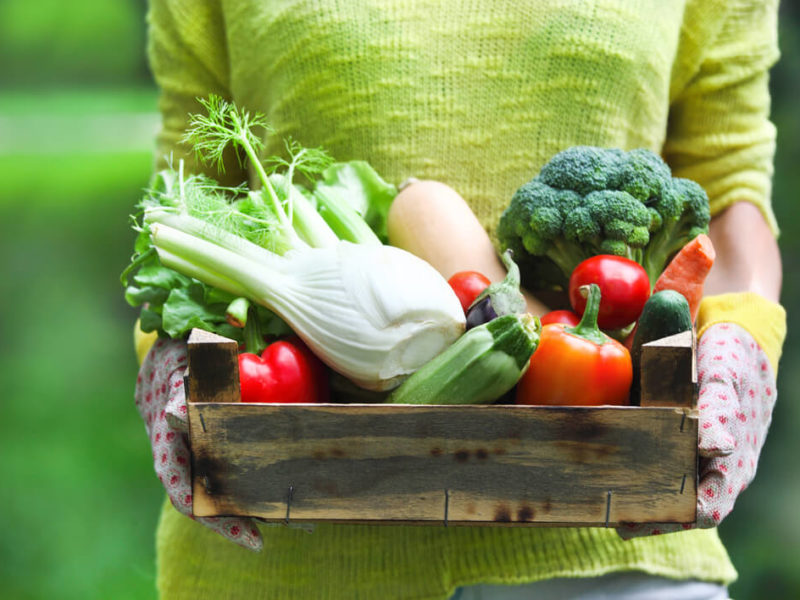
We Can’t Forget About the Soil
To have healthy plants, it is critical to have healthy soil. This is why many vegetables are less vital and nutritious. Large agribusiness factory farming methods deplete the soil of vital nutrients. Sustainable farming methods look at a farm as an ecosystem where each part is sustaining the whole.
In Africa, LEAF’s, (Linking Environment And Farming, Integrated Farm Management program) teaches people to truly live in harmony with the land. We can see the effects of sustainable farming practices and their value where the resources are scarce, but with sustainable agriculture the land can sustain a community. They learn practices that include composting for nutrient dense soil, planting diverse crops, encouraging beneficial insects, drip irrigation, and water conservation. In the US a perfect model for sustainable agriculture would be Polyface Farm. These pasture-based, beyond organic, local market farmers are springing up all over the globe.
More Veggies Please
You do not need to turn into a vegan or vegetarian to reap the health benefits of a plant-based diet. Besides simply adding more veggies to your plate, juicing can be a fun solution to getting even more plants into your diet. They become more bioavailable and easier to digest with a whirl in the blender. Make sure you are finding combinations that do not have too much fruit as that can cause blood sugar issues for some, and throw in some spinach, kale, or cilantro. And add a few drops of turmeric to add even more benefits to the cells in your body with this organic product we love from Purality Health. Here’s a good starter smoothie to try.
Starter Kale Breakfast Smoothie
- 1 banana, frozen
- 1/2 cup blueberries
- 1 large green apple, cored
- 2 tbs flax seed
- 1 cup kale, washed and chopped
- 1 cup coconut water
Blend and enjoy!
Sources:
- https://www.myplate.gov/
- http://articles.mercola.com/sites/articles/archive/2010/11/29/recommended-vegetable-list.aspx
- https://www.youtube.com/watch?v=yIPZXAMN-sY
- http://www.onegreenplanet.org/animalsandnature/facts-on-animal-farming-and-the-environment/
- https://www.mynaturalfamily.com/paleo-green-smoothie/
You May Also Like…


